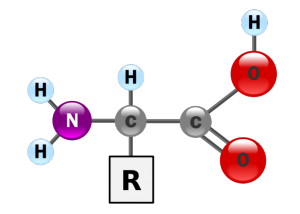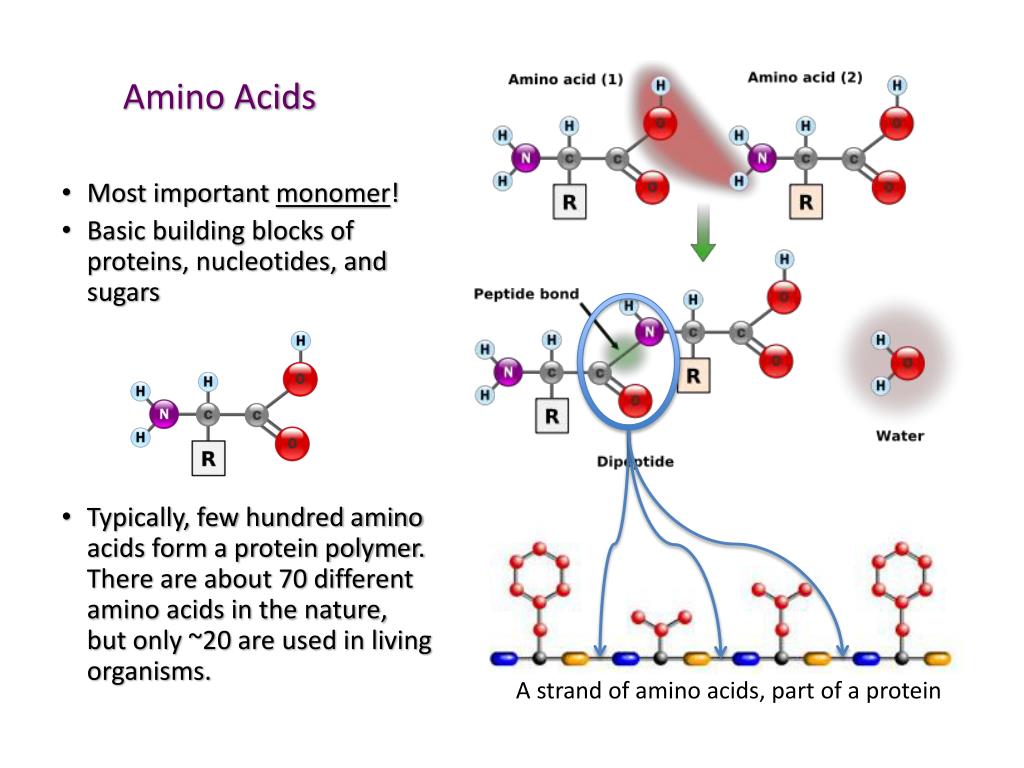

The study looked at how amino acid monomers linked up to make interesting oligomers that look like small pieces of proteins. They kink and fold up into specific, mostly functional wads, sheets, and other shapes, which are called proteins. Polypeptides are long chains that often form helices, like old phone cords, or flat sheets. In proteins, the polymer is called a polypeptide - named after the peptide bonds that link its monomers together. A few of them linked together is called an oligomer, and really long chains are polymers. In a protein, one amino acid is a single chemical unit, or monomer. Those bonds gave resulting molecular segments a protein-like shape in the lab. To help understand the study's significance, let's look at how proteins form, then at the study's core experiment, which revealed an unexpectedly high preference for bonds between sites called alpha-amines (α-amines) on the biological amino acids. Looking at this study, it appears today's biology may reflect these early prebiotic chemical reactions more than we had thought," Loren Williams, another principal investigator in the study and a professor in Georgia Tech's School of Chemistry and Biochemistry. "Our idea is that life started with the many building blocks that were there and selected a subset of them, but we don't know how much was selected on the basis of pure chemistry or how much biological processes did the selecting.

The preference for the incorporation of the biological amino acids over non-biological counterparts also adds to possible explanations for why life selected for just 20 amino acids when 500 occurred naturally on the Hadean Earth. The study's experiment points to chemical evolution having prefabricated some amino acid chains useful in living systems before life had evolved a way to make proteins. The research was funded by the NSF and NASA. The research team, which included collaborators from The Scripps Research Institute, published their results in the journal Proceedings of the National Academy of Sciences on July 29, 2019. "Lysine went into the chains predominantly in the way that it is connected in proteins today," said Hud, who is also director of the National Science Foundation/NASA Center for Chemical Evolution (CCE), which is headquartered at Georgia Tech and explores chemistry that may have paved the way to first life. They also thought lysine would often not fit neatly into the chains the way it does in proteins. In particular, the researchers had thought the non-biological amino acids would outcompete the biological amino acid lysine, but it was not the case. "The non-biological amino acids were being excluded to some extent," said Nick Hud, one of the study's principal investigators and a Regents Professor in Georgia Tech's School of Chemistry and Biochemistry. The reactions resulted mostly in strings that were closer to today's actual proteins and less in chains that included non-biological amino acids. The experiment dashed those expectations - but to the researchers' delight. The non-biological amino acids had the potential to chemically react equally well or better than the biological ones and frequently become part of the tiny chains, perhaps serving as an in-between step in the greater evolution toward proteins. They had given these amino acids found in proteins today some stiff competition by adding amino acids not found in proteins, thinking these non-protein, or non-biological, amino acids would probably not allow predominantly biological segments to come together.


In the laboratory, under conditions mimicking those on pre-life Earth, a small selection of amino acids linked up spontaneously into neat segments in a way that surprised researchers at the Georgia Institute of Technology.


 0 kommentar(er)
0 kommentar(er)
